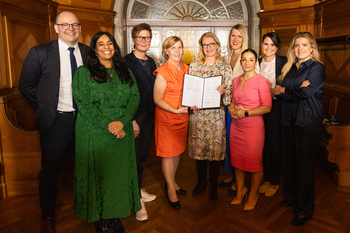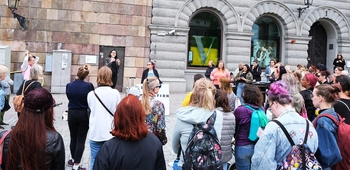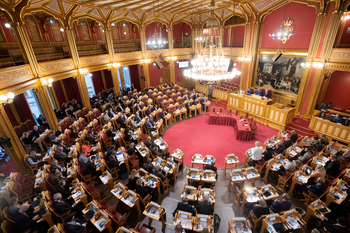Is poorer language comprehension weakening the Nordic community?

The language landscape has changed a great deal in the 70 years since official Nordic co-operation was established. Young people have grown up in a globalised world in which English is ubiquitous, and the Nordic languages seem less relevant. It is important to remember that the Scandinavian languages (Norwegian, Swedish and Danish) are not the only ones in the Region – Icelandic, Finnish, Greenlandic, Faroese and Sápmi are also spoken. In Finland, Swedish is compulsory for Finnish-speaking school pupils. In Greenland and the Faroe Islands, schoolchildren learn Danish.
The Nordic Council of Ministers asked more than 2,000 young people aged 16–25 across the Region how they view language and culture and how well they think that they understand each other in the Scandinavian languages.
In several of the countries, a significant proportion of the younger population says that it is not easy to understand Danish, Norwegian or Swedish. On the other hand, almost everybody thinks English is easy.
Andrea Skjold Frøshaug and Truls Stende of the Nordic Council of Ministers’ Policy Analysis and Statistics Unit compiled the report. According to Stende, the results are not particularly surprising, even though the report shows that many young people find it difficult to understand the Scandinavian languages.
“There are big differences between the countries in terms of how many young people find it easy to understand the Scandinavian languages. In several countries, a significant proportion of the younger population says that it is not easy to understand Danish, Norwegian or Swedish. But almost everybody thinks English is easy,” he points out.
The results
The survey asked young people about their understanding and mastery of languages – with an emphasis on the Scandinavian ones. Here are some of the results:
- Across the Nordic Region, 62% of respondents think Norwegian and Swedish are easy to understand.
- Only 26% think Danish is easy to understand.
- The highest proportions of those who find it easy to understand Scandinavian languages are found in the Faroe Islands and Norway.
- In Finland, Greenland and Iceland in particular, a relatively large proportion disagree and find it difficult.
- Almost all Nordic young people (95%) find English easy to understand, and its influence is generally strong. As many as 65% respond that they sometimes find it easier to use English than their native language, and 62% say that English exerts a great deal of influence on their own language.
- At the same time, two-thirds agree that understanding the Scandinavian languages is an important part of the Nordic sense of community.
Do we have a language crisis?
The findings in the report “Does the Nordic language community exist?” are in line with trends identified in other studies in the 2000s. Previous surveys also show that young people are less able to understand Scandinavian but have a significantly better grasp of English than previous generations. The trend is explained partly by the influence of English and the fact that new technology and social media have changed how young people communicate, use language and consume culture.
The results seem to suggest that the Nordic sense of community is in trouble, but perhaps language comprehension is not as important for the Nordic community as we thought.
When as many as 60% of young people state that they prefer to switch to English when they encounter other Scandinavian languages, it might be tempting to think that the sense of Nordic community is in meltdown. Stende disagrees.
“The results seem to suggest that the Nordic sense of community is in trouble, but perhaps language comprehension is not as important for the Nordic community as we thought. In a survey from 2017, most respondents identified similarities in social models and shared values, rather than understanding each other’s languages, as the most important reasons why the Nordic countries should work together,” Stende points out.
Although young people do not think that language is the most important factor for bringing people together, the survey also indicates that they do find language important when it comes to personal interaction. The situation is not “either or”, but “both and”.
Read the report or download it as a PDF at the link below.




